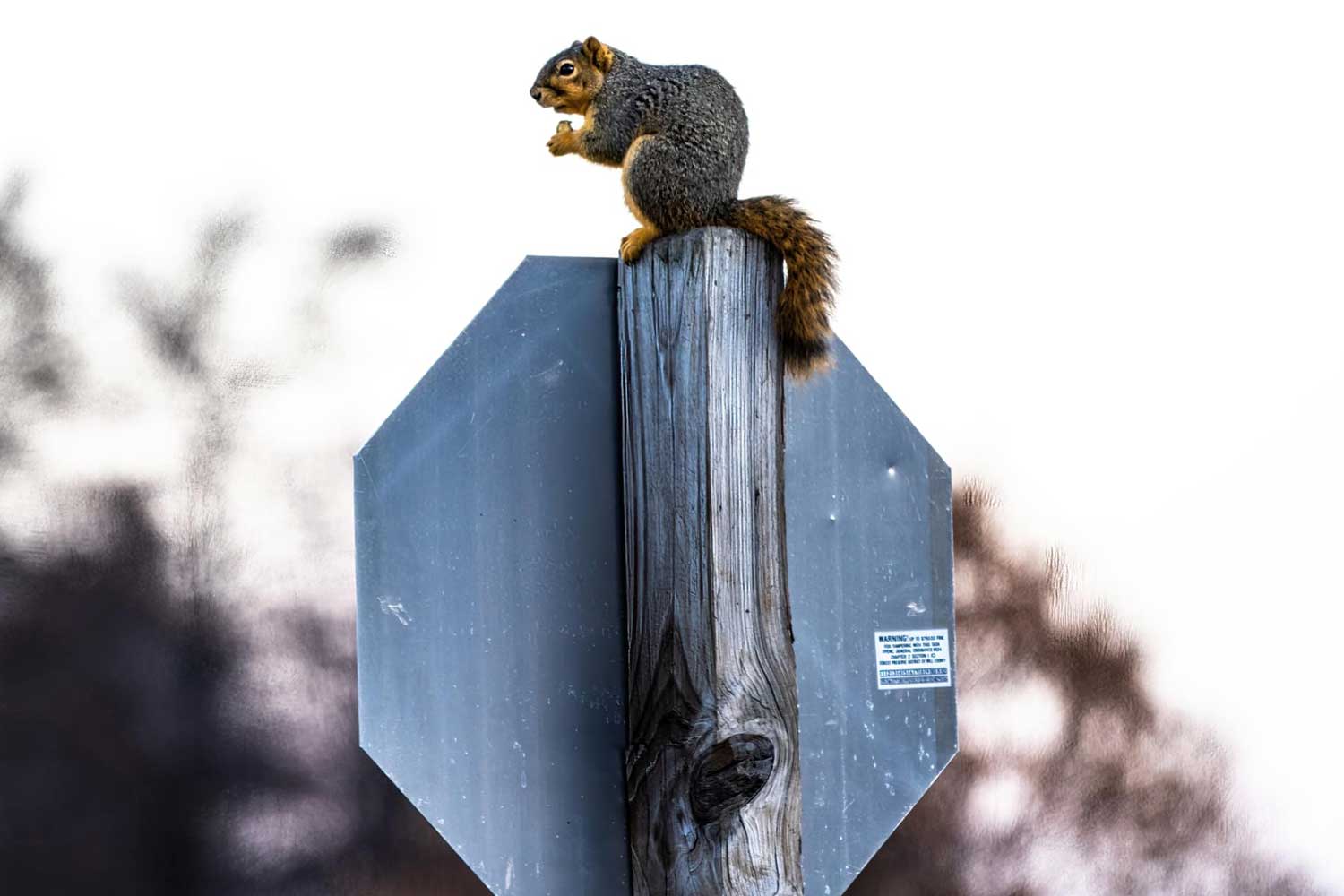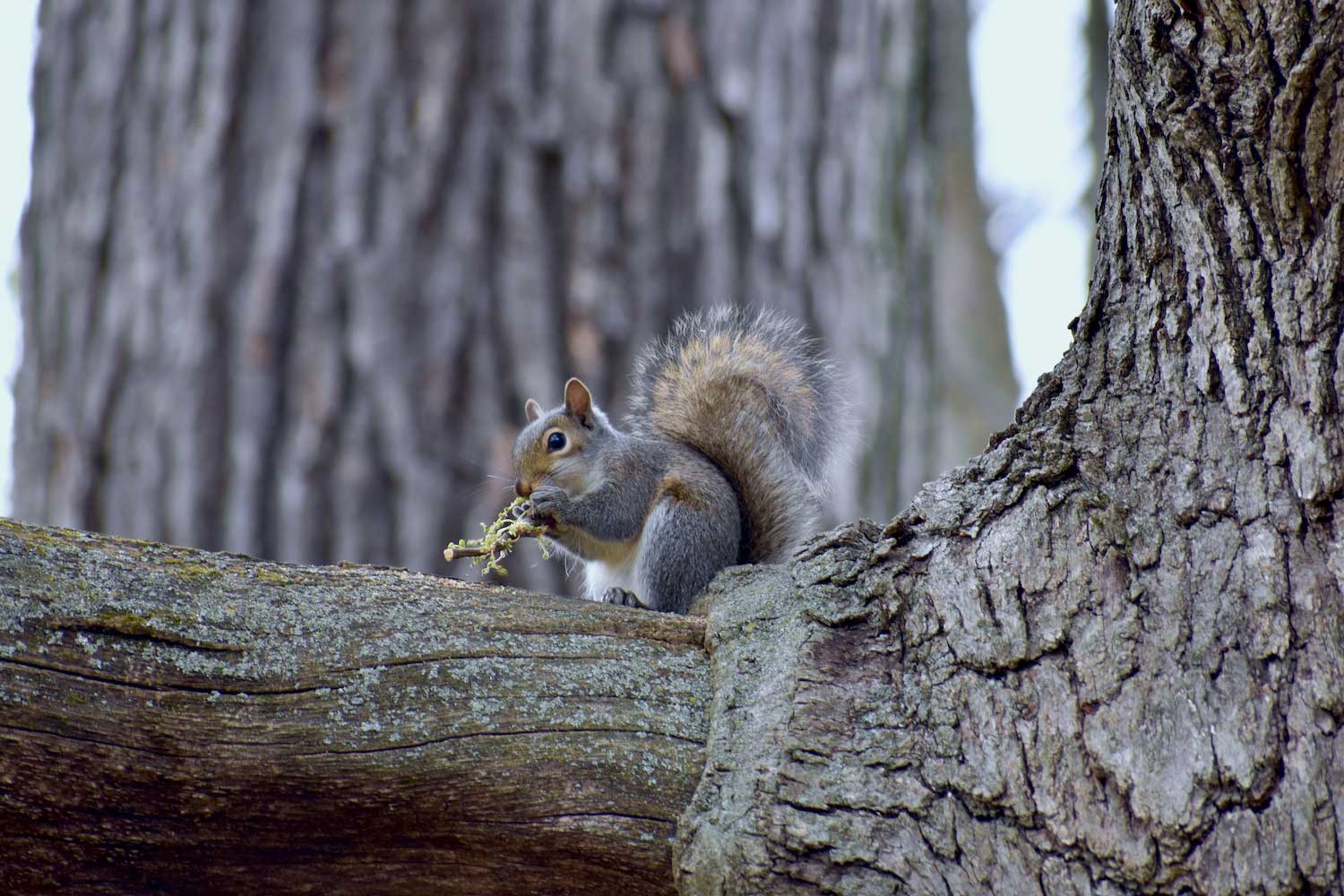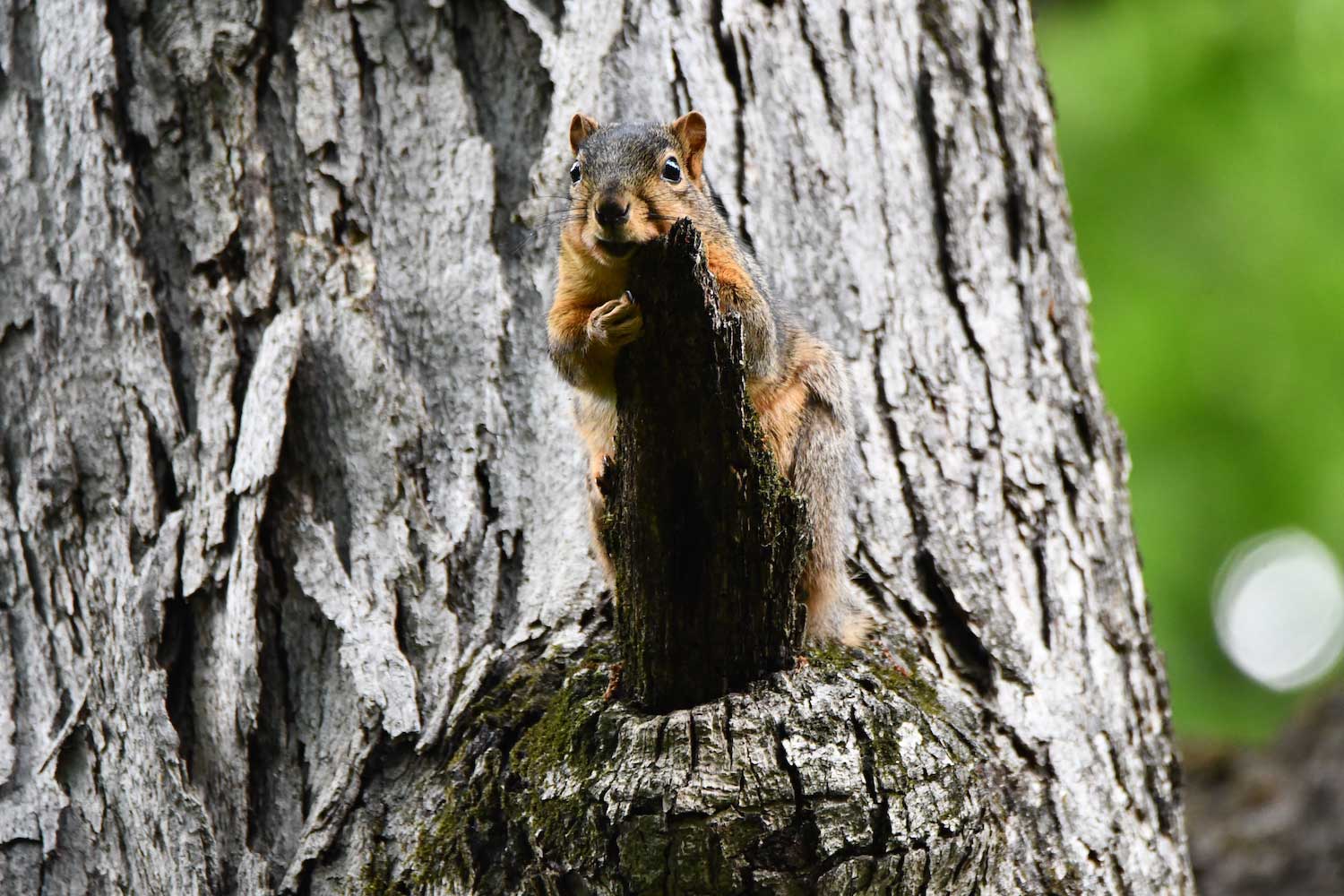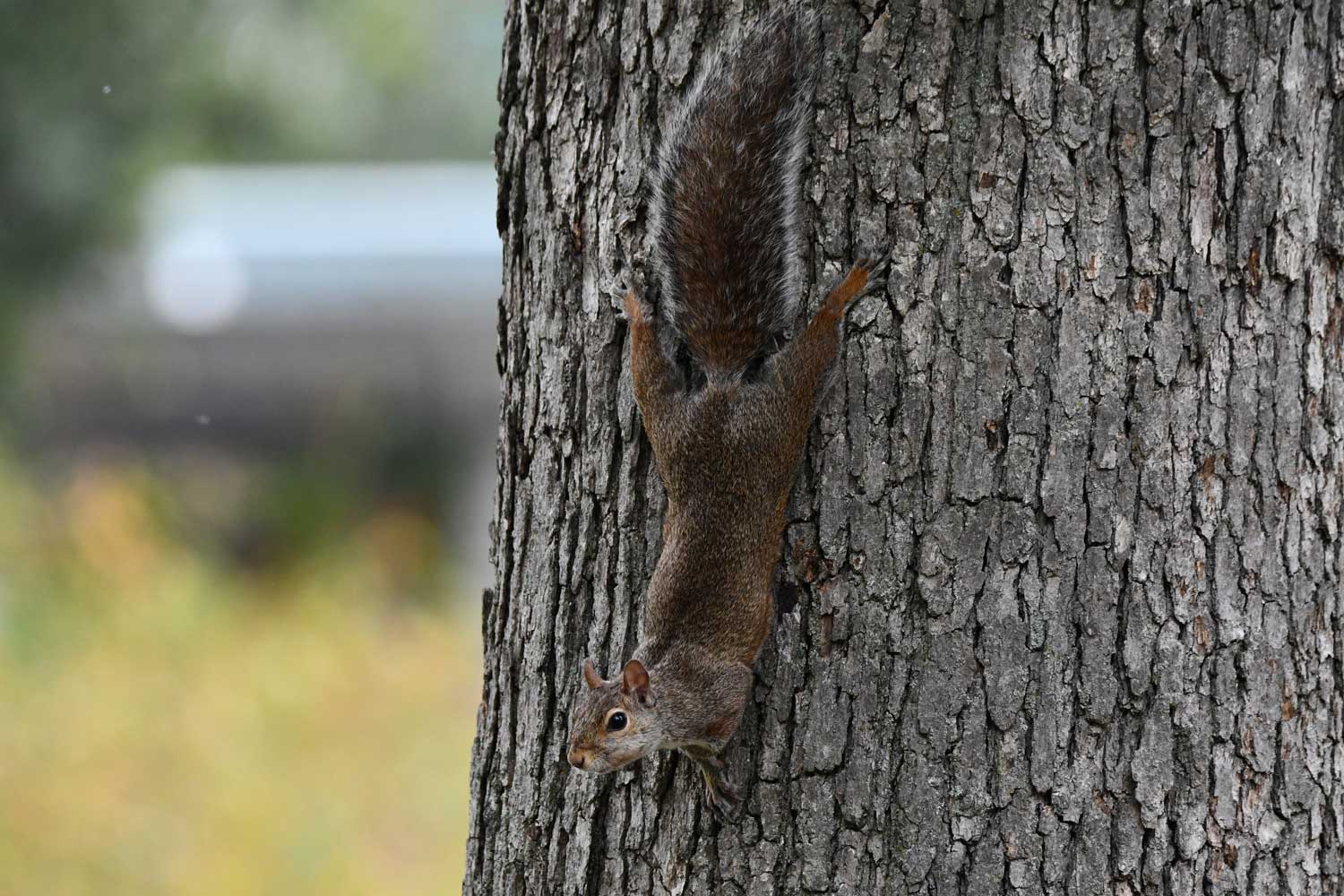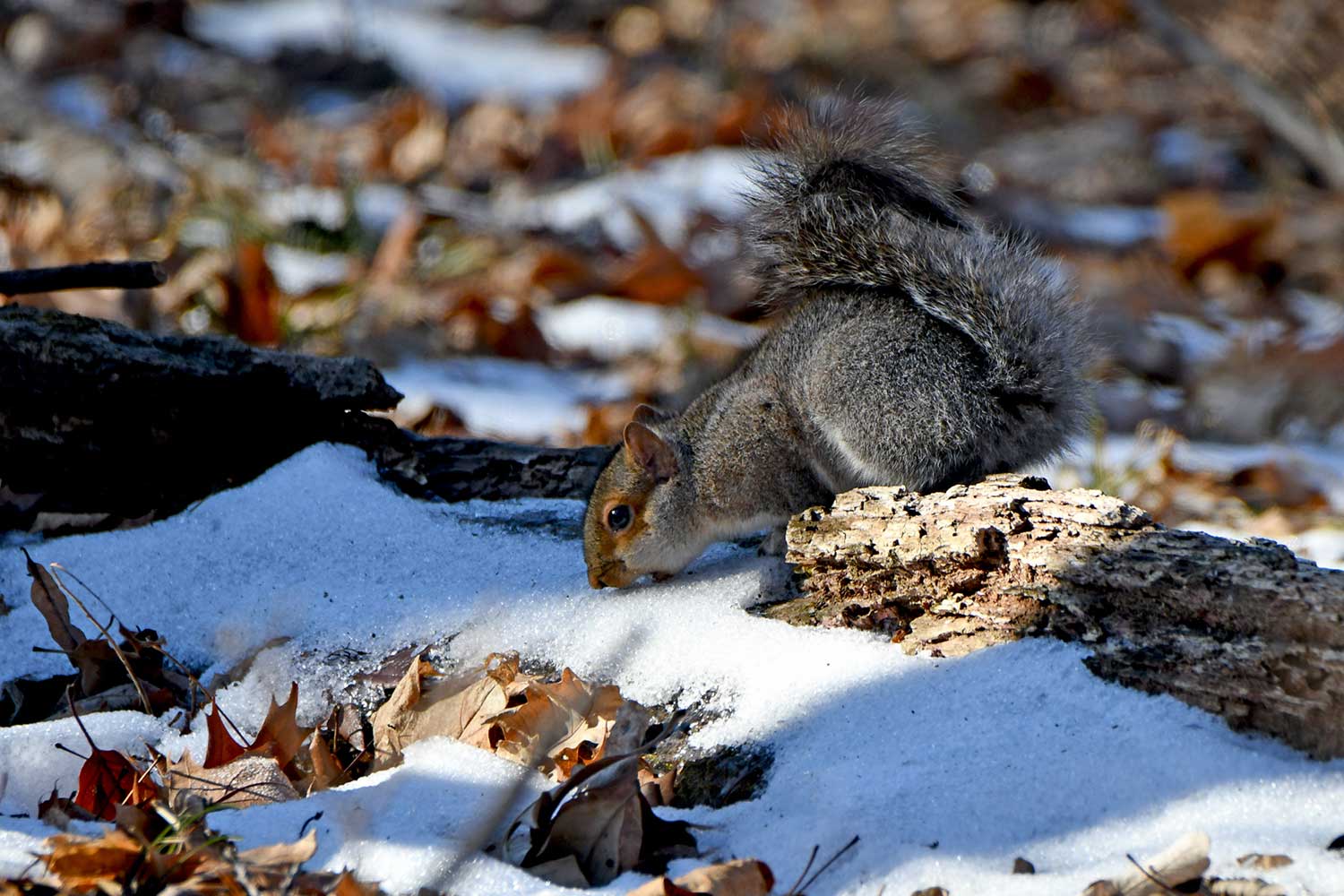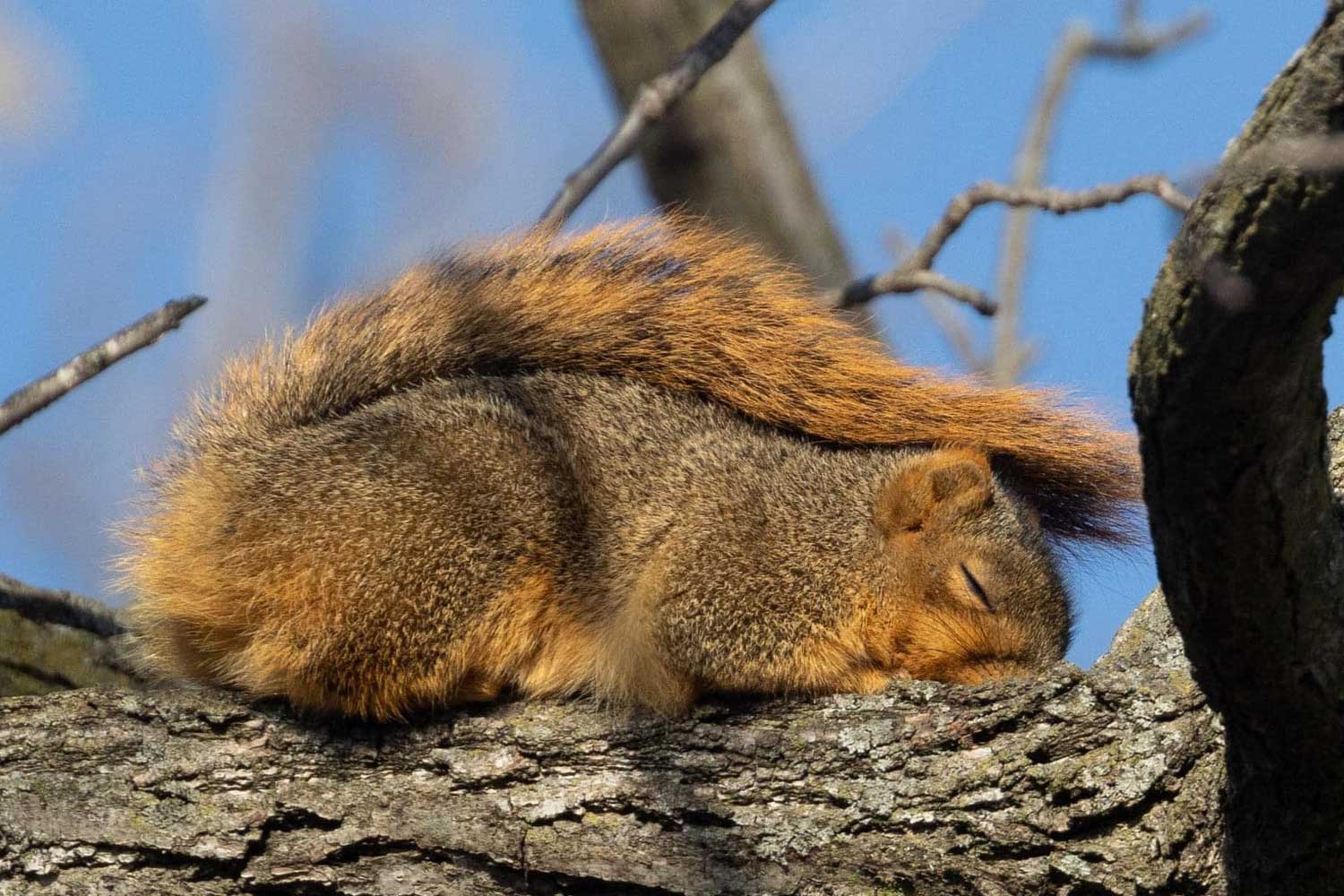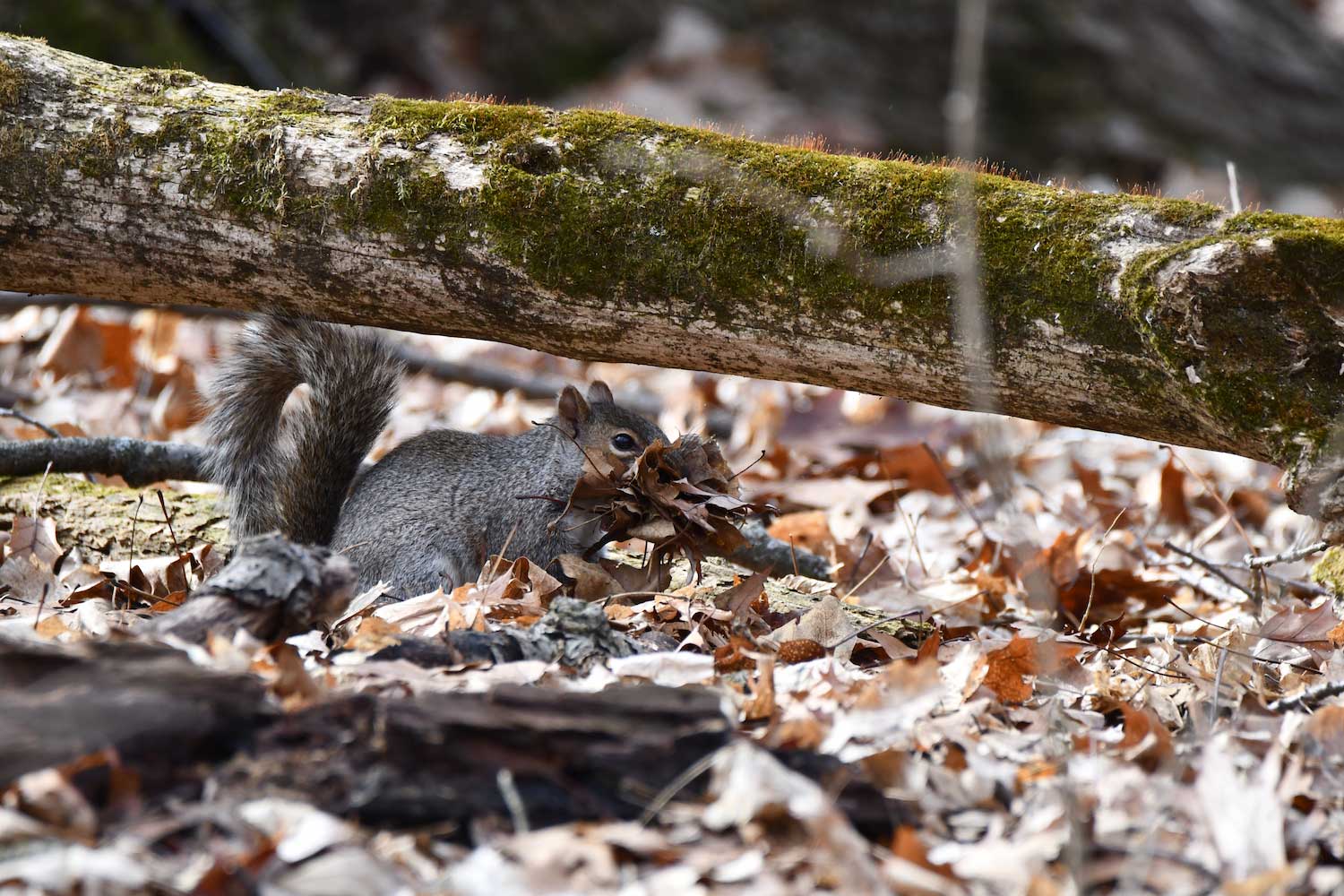Five fun facts about our squirrelly squirrels
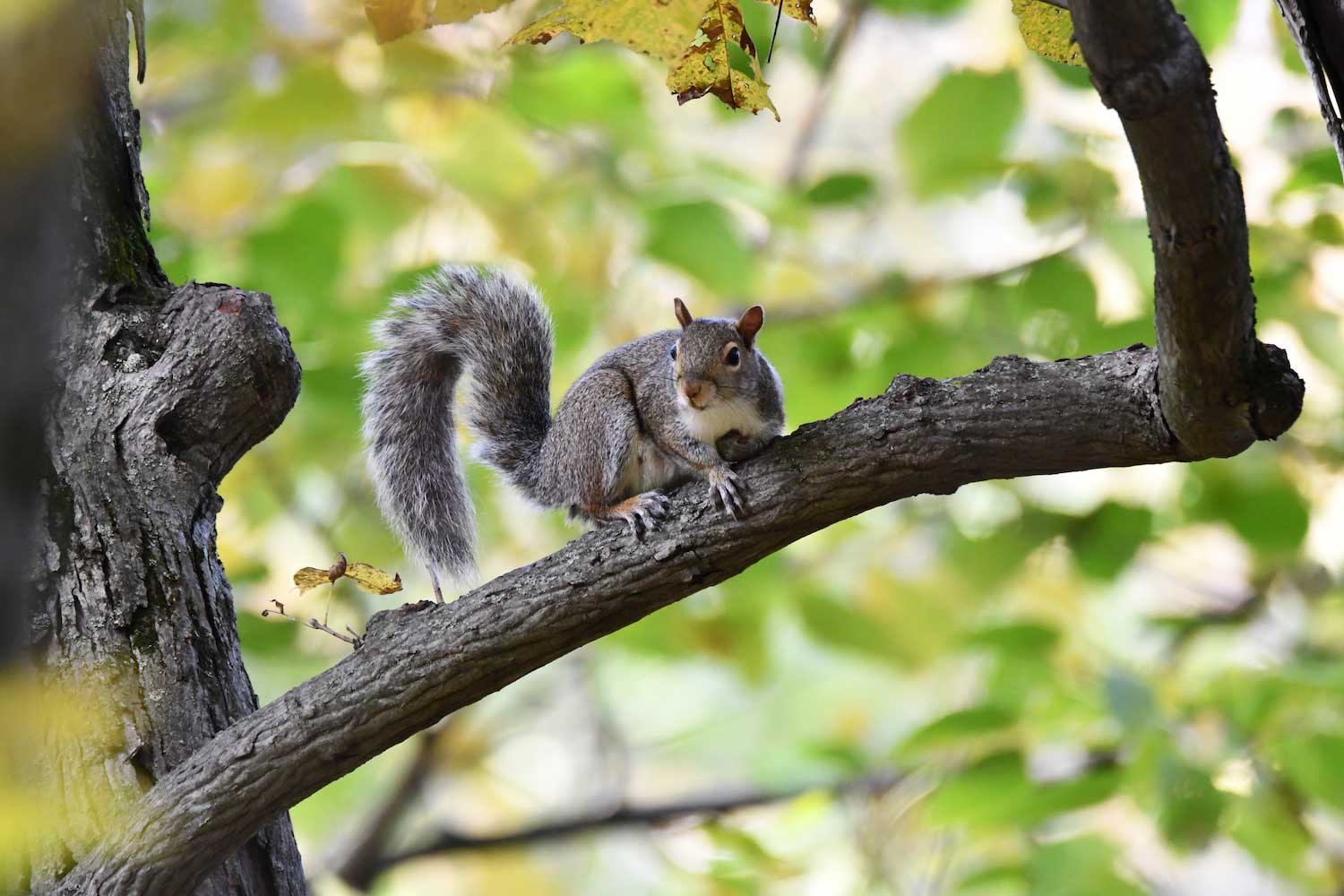
Thinking about the most common animals we see in Illinois might bring several animals to mind. If you narrow it down to mammals, a few might make your list, and squirrels would probably be among them.
Collectively, squirrels are common, seen throughout the seasons as they make their way up and down our trees and scurrying across the ground. In the winter, they are one of the few animals we might see regularly because they do not hibernate and remain active on nice winter days. In the spring and summer, the leafy trees may block them from view, but they are always around. And in the fall, we recognize them for one of their most common and familiar behaviors — burying nuts for winter.
Squirrels are a common enough sight that we often don't give them much thought, unless maybe they are stealing all the seed from our bird feeders. They are interesting creatures, though, when you take some time to dig in and learn about them.
Chipmunks are squirrels too
When we think of squirrels, we tend to think of tree squirrels — the gray squirrels, fox squirrels and red squirrels that are often seen scurrying up and down our trees. But chipmunks are squirrels too. They and several others, including 13-lined ground squirrels, are ground squirrels, not tree squirrels. The Sciuridae family, or squirrel family, includes tree squirrels, ground squirrels and even prairie dogs and marmots like the woodchuck. All together there are more than 200 species of squirrels in the world, living everywhere except Australia, National Geographic reports.
All squirrels — tree squirrels, ground squirrels and everything in between — are rodents, and one of the hallmark characteristics of rodents is teeth that never stop growing. The four front teeth of all the rodent species in the world never stop growing, which is why so many rodents — mice, beavers, gophers, moles and more — are known for their chewing behavior. Because their teeth are always growing, they have to gnaw on things frequently to prevent them from getting too big. Another shared characteristic among rodents: They cannot vomit.
Some are tiny. Others are huge
Our three local tree squirrel species — eastern gray squirrels, fox squirrels and red squirrels — are roughly the same size, with fox squirrels being the largest of the three and red squirrels being the smallest. In the wider world, though, there are much bigger and much smaller squirrels.
On the largest end of the spectrum, Indian giant squirrels are much larger than any tree squirrel we see here in the United States. They can be up to 3 feet long and weigh 4 pounds, which is about twice as much as our familiar fox squirrels. Indian giant squirrels also have unique coloration. Their fur is several different colors, including shades of brown, maroon, purple and orange, Smithsonian Magazine reports. They are one of four giant squirrel species native to different parts of Asia.
On the small end of the spectrum is the tiny African pygmy squirrel, which is only 5 inches long from head to tail, National Geographic reports. Compare that to our smallest squirrel, the red squirrel, which are between 11 inches and 14 inches long. These squirrels look much like our tree squirrels, but are small enough to fit in your hand even when fully grown.
They are frequent victims of theft
Squirrels prepare for winter by caching food, mostly in the form of burying nuts. And they can bury a lot of nuts — as many as 3,000 a year, Scientific American reports. That's more nuts than they will probably actually need to make it through winter, and it's a good thing too, because squirrels can lose a lot of nuts to thieves.
Squirrels don't bury their nuts all in one place. Instead, they practice scatter hoarding, which is having many caches of food hidden away. This means they have a lot of food caches to protect — too many in fact. About 25% of the food they hide in the caches ends up being stolen by other squirrels, the National Wildlife Federation reports.
All that thievery may be why squirrels also engage in a practice called deceptive caching, in which they dig a hole and cover it up without ever dropping the nut in it. Pretending to bury a nut to throw off would-be stealing squirrels is thought to be one way they protect their food caches, according to the wildlife federation.
They have a clever trick to escape predators
Tree squirrels can run fast — up to 20 mph — but some of their predators are as fast or even faster than them, so they can't rely on speed alone to outrun any animal giving chase. Instead, they have a clever technique to help prevent being caught: They run in a zigzag pattern.
Running zigzag instead of in a straight line makes it harder for predators — birds, mammals and more — to catch them, the National Wildlife Federation reports. The predator must change directions to get them in their grasp, and that's not always easy by land or by air. Although this strategy serves them well in escaping predators, it's not as successful for avoiding cars. They may employ their zigzagging run while crossing a road, but that leaves them on the road for longer, making it more likely they may get hit.
As much as running in a helter-skelter manner may help squirrels, it's not foolproof and they are still preyed on often. Squirrels play an important role in the ecosystem both because they bury nuts, aiding reforestation efforts, and because they are a key food source for many other animals. Coyotes, foxes, and hawks, owls and other raptors all rely on tree squirrels as an important food source, according to Wildlife Illinois.
They can fall from any height without being hurt
You've probably heard that cats always land on their feet, and while squirrels may not always land on their feet when they fall, they can survive a fall from any height. How? Thanks to their size and their mass. To start, squirrels are small and lightweight, which means the force of gravity they have to withstand when they fall isn't that great, according to the McGill University Office for Science and Society.
Their small size alone isn't enough to save them, but that combined with how they fall is. When squirrels are falling, they instinctively spread their bodies out, with legs extended. This slows down the speed at which they are falling because it increases the wind resistance. This allows the squirrels to glide as they fall. It is the same principle that allows flying squirrels to glide — not fly — through the air, McGill University reports. Flying squirrels aren't actually capable of flight, but they look like they are flying as they glide through the air with their legs outstretched.
